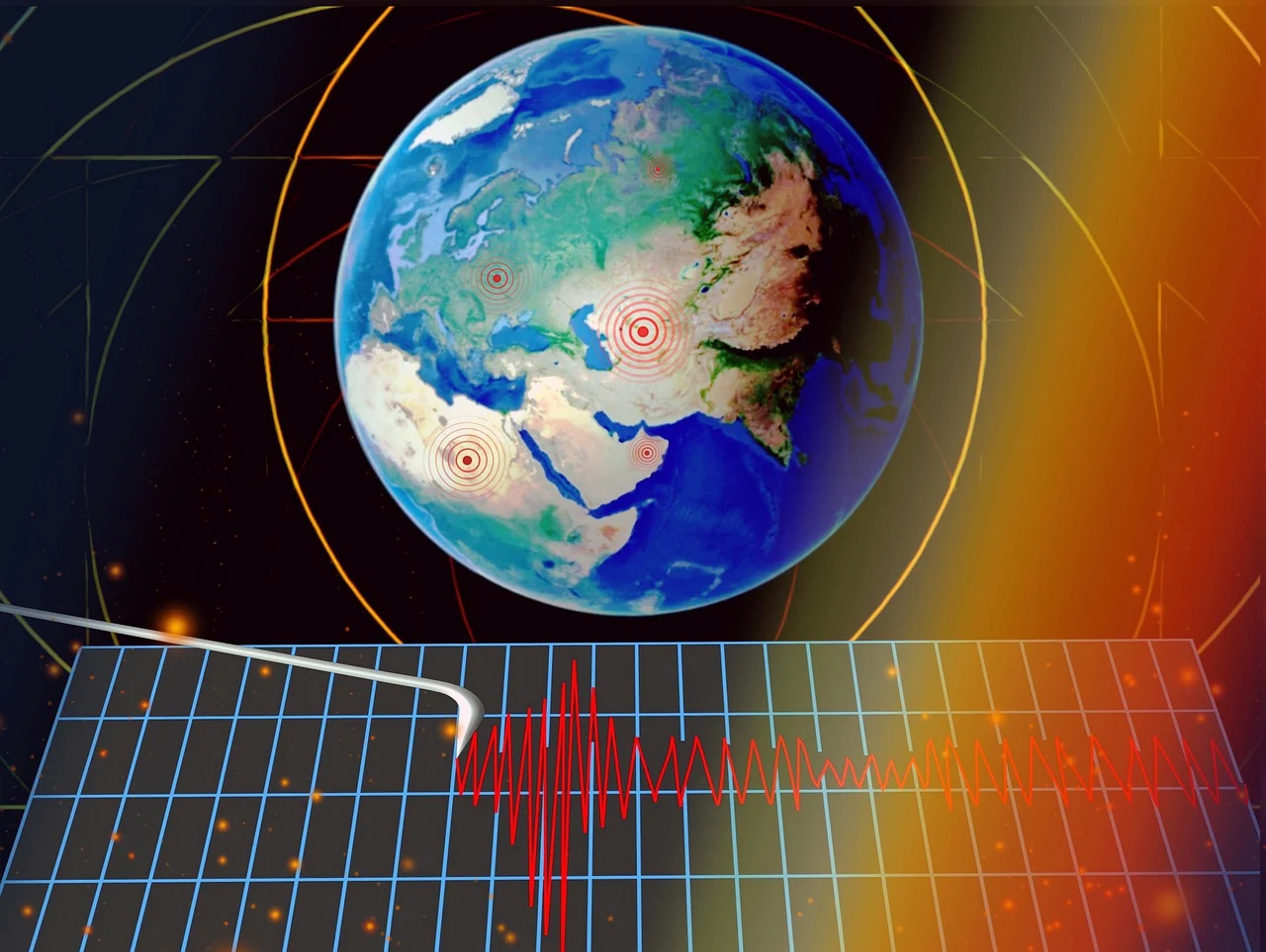On Tuesday, November 26, 2024, a powerful earthquake struck off the coast of Japan’s Noto Peninsula, causing widespread tremors across multiple regions and temporarily halting transport services. The magnitude 6.4 earthquake, which occurred at 13:47 UTC (22:47 local time), was an aftershock of the devastating M7.6 earthquake that struck earlier in 2024, which had claimed over 440 lives. While the November earthquake did not trigger a major tsunami, it did lead to significant local disruptions, building damage, and public safety concerns, particularly due to its proximity to both populated areas and key infrastructure.
Details of the Earthquake
The earthquake’s epicenter was located about 30 kilometers (18 miles) west of the Noto Peninsula, a region in the Ishikawa Prefecture, at a depth of 10 kilometers (6.2 miles). The tremors were felt in a large swath of Japan, from the northeastern to western regions, affecting several prefectures including Ishikawa, Toyama, Niigata, and Fukui. Local reports confirmed that the tremors were intense, with many areas experiencing seismic intensities of 1 or higher on the Japanese seismic scale, and even stronger shaking reported in some places.
According to the United States Geological Survey (USGS), an estimated 1.3 million people experienced moderate shaking (intensity V), while 86,000 people felt strong shaking (intensity VI). These tremors were powerful enough to cause localized damage, including fallen objects, structural concerns in older buildings, and minor injuries.
Disruptions to Infrastructure and Transportation
In the aftermath of the earthquake, significant disruptions were reported across the region. Most notably, the Hokuriku Shinkansen, the high-speed rail line connecting Toyama and Kanazawa, was temporarily suspended as a precautionary measure. This suspension of train services caused considerable inconvenience for daily commuters, particularly in a region where rail transport is a primary mode of travel.
The Japan Meteorological Agency (JMA) did not issue any tsunami warnings following the earthquake, and officials reported no significant changes in sea levels. However, given the region’s vulnerability to earthquakes, authorities took immediate steps to inspect critical infrastructure, including bridges, railways, and power plants.
One area of concern was the Shika Nuclear Power Plant, operated by Hokuriku Electric Power Company. While the plant did not report any abnormalities, it was important to note that both of the plant’s reactors have been offline since the 2011 Fukushima disaster, meaning there was no immediate risk of nuclear safety issues. Still, authorities were quick to assess any potential secondary risks, especially considering Japan’s history of devastating earthquakes and the importance of nuclear safety in public perception.
Casualties and Damage Assessment
Although the earthquake was strong, reports indicated that the damage was relatively contained, with only one serious injury reported. A 72-year-old woman in the town of Tsubata, located in the Kahoku district of Ishikawa Prefecture, was injured by falling debris. Other minor damages, such as displaced objects and cracks in older buildings, were reported, and local authorities promptly launched inspections to ensure the structural integrity of critical infrastructure.
In addition to building damage, there were concerns about the risk of landslides, especially given the region’s mountainous terrain and recent heavy rainfall. Local authorities were closely monitoring vulnerable areas, particularly in rural regions, to mitigate the potential for further incidents.
The earthquake was a reminder of the ongoing seismic risks in Japan, which sits on the Pacific Ring of Fire, a region known for frequent earthquakes and volcanic activity. Japan’s preparedness for such events is robust, but as recent events have shown, even advanced systems cannot always prevent the impact of natural disasters.
Aftershocks and Ongoing Monitoring
Following the main earthquake, over 75 aftershocks were recorded, with magnitudes ranging from 3 to 4 on the Richter scale. Aftershocks are common in regions affected by significant seismic activity, and authorities continue to monitor the situation closely. Japanese seismic protocols require ongoing aftershock assessments and swift responses to mitigate the risks of further damage or casualties.
Officials have advised residents to remain vigilant for additional aftershocks and to report any structural damages or hazards. The Japanese government has also activated its emergency response teams, including the Japan Self-Defense Forces (JSDF), which may assist in rescue and recovery operations if needed.
The Context of Japan’s Seismic Risk
Japan is one of the most earthquake-prone countries in the world, with over 1,500 earthquakes of magnitude 3 or greater recorded annually. The country’s preparedness for earthquakes is one of the most advanced in the world, with extensive early warning systems, rigorous building codes, and a deep commitment to disaster response and recovery.
This recent earthquake near the Noto Peninsula was an aftershock of the M7.6 earthquake that occurred on January 1, 2024, which had devastating consequences, including more than 440 deaths. That earthquake, which struck the same general region, remains fresh in the memories of many, and the country is still in recovery mode from its aftermath.
The continued seismic activity in the region underscores the necessity for sustained vigilance. Japan’s robust disaster management strategies, which include earthquake-resistant infrastructure, real-time monitoring systems, and nationwide public education on emergency preparedness, are vital to minimizing risks and casualties.
Conclusion
While the M6.4 earthquake that hit Japan’s Noto Peninsula on November 26, 2024, caused some structural damage and prompted the suspension of transportation services, it also highlighted the strength of Japan’s disaster response mechanisms. The quick action taken by local authorities and the relatively low number of casualties stand as testament to the country’s preparedness and resilience in the face of natural disasters. As Japan continues to monitor aftershocks and recovery efforts, the event serves as a reminder of the nation’s ongoing vulnerability to seismic activity and the importance of staying prepared for such eventualities.
References:
- Japan Meteorological Agency (JMA) – Earthquake Data and Response Information
- United States Geological Survey (USGS) – Earthquake Reports
- The Japan Times – Reports on Earthquake Response and Damage
- Hokuriku Electric Power Company – Shika Nuclear Power Plant Updates
- NHK World – Coverage of Earthquake in Ishikawa Prefecture



